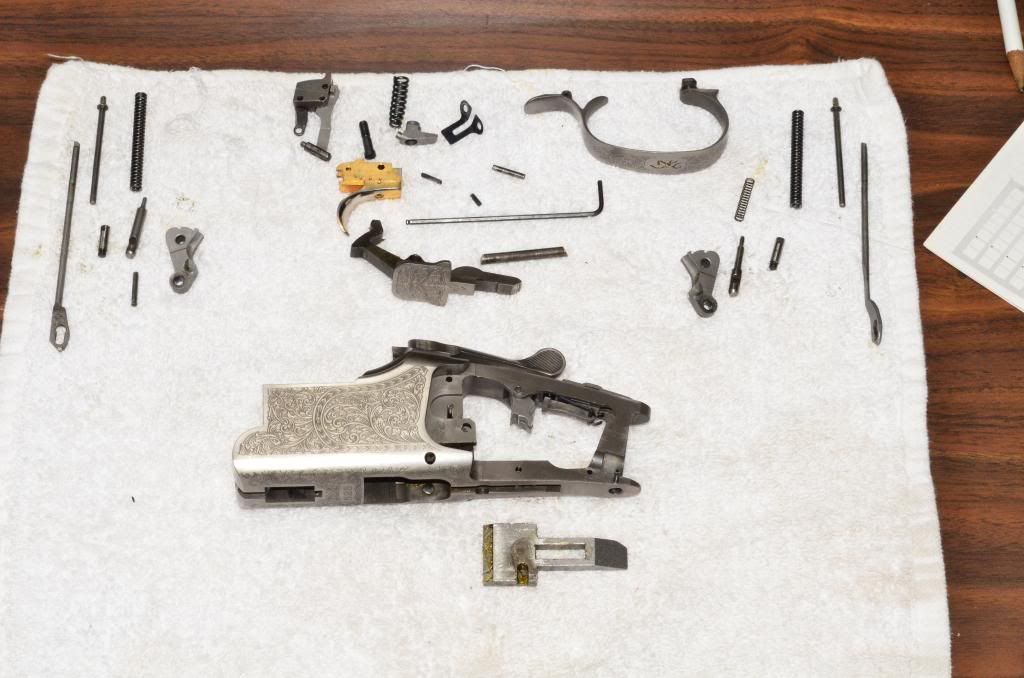I started as Browning guy. I've owned many Browning o/u guns form the Citori line, from field guns to target guns. The early Citori guns up to the 80's were made with traditional machined forgings. The internals were very well made and fitted. After that, Browning started using investment castings around that time. The guns seemed to have less and less internal and external craftsmanship as time passed. I currently own a later 525 sporting 20 ga with32" barrels. The gun fits me well and the swing dynamics are great. But the internals are crap. The trigger pull was ridiculously heavy and had a ton of creep. It felt like I was dragging out the trash. I've worked the trigger until it's satisfactory. But the gun will not stand up to high volume target shooting. Fortunately, I don't shoot it much.
I'm a fairly serious amateur gunsmith, having done it full time decades ago. I owned a small machine shop and the gun smithing was a natural fit for me. I only work on my guns these days.
My only Beretta o/u was a 682 Gold E Sporting, 32", 12 ga. That gun was as nice on the inside as the outside. It was rebuild able for wear and had an excellent trigger pull. It was designed for high volume target shooting, unlike the Browning clay gun line that simply their Citori design receiver with various barrel and stock configurations. The current equivalent model to my 682 Gold E is the 692. The Beretta gun line has a clear step up above Browning guns, IMO. Both Browning and Beretta use a gold plating for decorative game scenes on the guns you mentioned. Browning doesn't do real gold inlays until you move to their custom Belgian guns, similar for Beretta.
There's a lot of characteristics that go into a gun feeling that make it "majic" for you. But the number one thing is gun fit. It is comprised of: length of pull, drop at the heel, drop at the comb, cast, and pitch. After that, you get into weight, balance, or a nebulous term applied to those two called swing dynamics. Most people tend to be suduced by a lighter gun if two were being compared. But the reality is most people will shoot a slightly heavier gun better, that has more forward weight ( slower swing).
If you're interested, the best book I've run across on gun fit is Gunfitting by Michael Yardley. It's a small inexpensive book available on Amazon.
Excellent information!
I take my archery to the extent that you take your gunsmithing. While I do not have the experience on the scatter gun side that you do, I am also not ignorant to it.
At 5'9", 165lbs., I have relatively small hands, short fingers and shorter arms (32" sleeve). With that said, both guns in this thread should very well and the sight line, while different, is very close for me. The biggest difference for me, with my hands, is the fore end on the Beretta. It fits just a bit better. Again, not a large enough difference to completely steer me one way or another.
I was first a Beretta guy, loving the Silver Pigeon and the 682 Gold E (while I never owned one, I shot one and loved it). Then, when I got into waterfowling, I moved over to Browing starting with the "Gold" Series. I know have a Maxus for waterfowl. Some of the clay guns from Browning look very nice and I can see me running them as well.
However, the past year or so, I have started to look at Beretta again, for the simple fact that when we were in Arizona, I fell in love with a Silver Pigeon V, in a 28ga. I was going to use it for Quail hunting, but I never purchased the gun. I still love that Silver Pigeon V and am considering the 20ga., 24" barrel.
But again, I really like the wood on the "High Grade" 725 Series, Grade V. It is a very nice looking gun. However, I think the fore end on the 725 series is hideous. Part of the factor is pricing and I am able to get the Browning a bit cheaper than the Beretta. But again, not a big enough difference to determine a purchase.
Both companies in my opinion are also "life style" companies, such as Orvis (who I am not a fan of). Browning and Beretta both have the clothing, accessories, etc. for one to show their "pride" every where!

